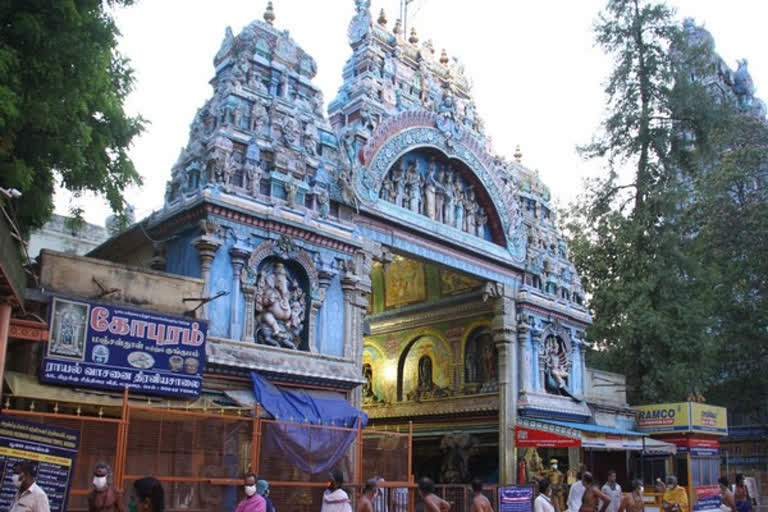Chennai: Close on the heels of announcing appointment of qualified persons with necessary training from all communities as temple priests, the DMK government has made a significant step in reviving Tamil as a language of liturgy in major temples under the purview of the state. From Thursday evening onward, Tamil chants started reverberating in 47 major temples administered by the Hindu Religious and Charitable Endowments Department.
Unlike in the past, the move has not evoked criticism or protest from conservative sections wedded to tradition. Besides enabling the DMK to counter the campaign that it is anti-Hindu, this would also satisfy the party's Tamil constituency. The Dravidian major could further stake claim for ensuring legitimate space for Tamil in the religious sphere. Interestingly, the AIADMK too has been a votary of this.
Information about the designated priests who would perform poojas in Tamil, with their mobile numbers, has been displayed prominently in all these temples, including famed pilgrim centres across the state. However, it is optional and the fee is nominally put at Rs 5. The list of temples include, the Madurai Meenakshi Amman temple, Sri Ranganatha Swamy temple at Sri Rangam and the Big temple in Thanjavur.
Under the new HR&CE minister PK Sekar Babu, radical changes are being implemented in temples. Immediately on assuming office, he announced the appointment of priests from all communities, including women, wherever possible. Further, he is on a mission to retrieve temple lands and properties under encroachment and digitise them, earning the goodwill of devotees.
Read: TN Police Kidnap, extort techie; Will CBCID probe IG’s role?
A day after Chief Minister MK Stalin unveiled the scheme, giving his imprimatur, Babu inaugurated the Tamil pooja service at the Kapaleeswar temple on Thursday. Speaking on the occasion, he said that the scheme would be extended to 500 more temples in the state to enable devotees to offer worship in their mother tongue. And, in the first couple of days, it has received widespread appreciation from the devotees.
While the demand for Tamil worship in the temple is nearly a century old, when the Justice Party Government in 1924 issued a GO, it was rescinded. 'Engum Tamil Ethilum Tamil' (Everywhere and in Everything Tamil), has been a slogan of the DMK for long. Right from the days of the Pure Tamil Movement and Self Respect Movement in the 1920s, according primacy for Tamil rather than Sanskrit in the religious sphere has been raised not by atheists but by devout scholars like Navalar Somasundara Bharathiyar, Maraimalai Adigal, and VK Surya Narayana Sastri among others. They were supported by leaders of religious mutts like Kundrakudi Atheenam. Thus Sanskrit vs Tamil is not a new one and has a long history.
“It was the then Karunanidhi government in 1971 which introduced Tamil liturgy in temples and subsequently, the AIADMK government of MG Ramachandran in 1980 also stood for it. However, only now, it had got a renewed thrust, offering a fresh challenge to the institution of hereditary priesthood and Sanskrit as the language of liturgy,” explains political analyst Aazhi Senthilnathan.
Debunking the DMK, some right wing critics point out that 'Thevaram', compositions of the four Saivite saint-poets, is being sung by 'Odhuvars' in many temples as well as Vaishnavite compositions on occasions. However, an aged Odhuvar was thrashed at the Chidambaram Nataraja temple by the priests for singing in the temple precincts in 2008.
“Sanskrit remains a tool of hegemony for the institution of hereditary priesthood in major temples. It is an irony that in Tamil Nadu, which gave birth to the Bhakthi movement in 6th century CE, Tamil is yet to get its primacy in liturgy. It was from here, the movement spread to the length and breadth of the country. On the contrary, Christianity and Islam have adopted local languages decades back, giving up Latin and Arabic. Tamil as the language of liturgy is necessary to democratise the religious domain,” argued Senthilnathan.
Read: Coimbatore: Dalit official forced to fall at the feet of upper caste man to 'apologize'



